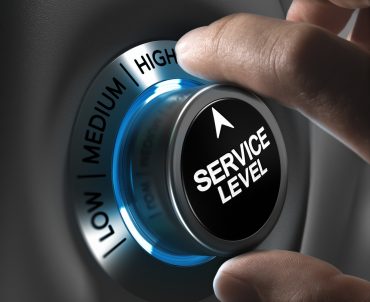
Servitization helps companies better serve customers who need proactive or predictive maintenance and helps ensure greater business resiliency.
Servitization is transforming the world of manufacturing and other industries, converting a product-oriented world to one that provides value through ongoing services.
A survey of 420 companies conducted by IDC for IFS finds, however, that most are in the very early stages of servitization, in which they monitor data streaming from products to proactively provide maintenance or upgrades. About 39% are moving into IoT to some degree, but only three percent are fully embracing new business models based on transforming to service organization. However, those organizations embracing servitization are seeing impressive impacts. Service revenues are on average one-third larger than their peers’ as a proportion of total revenue, and these companies are five times more likely to accelerate top-line growth above five percent annually.
See also: Everything-as-a-Service: Manufacturers Offering Post-Sale Maintenance Likely More Profitable
Companies across the board “have realized that service is an area in which they really must differentiate if they want to remain relevant,” says Darren Roos, CEO of IFS, in a recent chat with CXOTalk’s Michael Krigsman. “It’s happened because end users desire really memorable experiences. They demand guaranteed service outcomes. Service is very often the face of the brand and the way that they create new opportunities.”
Recent events are accelerating the need for businesses to reinvent themselves as service providers. Roos emphasizes. “ln Covid-19 times, we’re moving into a space where service is much more important.”
Not only does the move to servitization help better serve customers who need proactive or predictive maintenance, but helps ensure greater business resiliency. “The business becomes more resilient,” he states. “They become better. They become more profitable.” On the customer side, “it’s a better experience and that’s such a compelling value proposition.”
Roos points to his own industry, software. that only recently made a historic shift away from shipping products to providing 24×7 services to customers. “The software industry is a great example of servitization,” he says. “Potentially, customers would have gotten their maintenance and support offering, but that was just another transaction every time you shipped new software every few years.”
With cloud — the software industry’s version of servitization, companies have had to “think very differently. They have to think about adoption. How is the customer using the product? They have to think about their customer experience. Is it a good experience to use it? They have to think about how do they keep their customer getting the value that they’d anticipated getting rather than just making a product and selling it.”
Ultimately, the goal is to elevate the customer experience for those who engage with manufacturers and other companies. “It’s a very different proposition, and that requires a cultural shift,” says Roos. “I think that those shifts are always customer-focused, always focused on how the customer is going to have a better experience.”





























